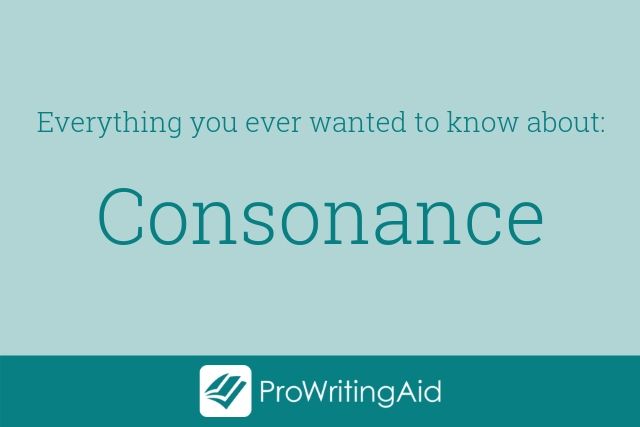Consonance
Consonance, assonance, alliteration. Lions, tigers, and bears—oh, my. What do you need to know about consonance as a writer before you consider using this literary device?
Definition of consonance
Consonance is a stylistic literary device that uses the sounds of similar consonants in words, a sentence or phrase. These consonants don’t have to be the same, just the sounds. For example, words with an "f" or "ph" or even "gh" sound the same but use different consonants.
The companion technique to consonance is assonance, where a writer repeats vowel sounds.

Examples of consonance
"Shelley sells seashells by the seashore." This tongue-twister relies on both the s and the sh sounds to create consonance.
"She created a streak of good luck." This example uses c, k and ck to form consonance.
"Her big swing is gone." Here, the g sound comes at both the end and the beginning of words.
"The variety of animals at the zoo was amazing, from chimpanzees to lizards." Consider how the z sound is even repeated in the word "was."
Examples of consonance in literature
Shakespeare’s Hamlet: "A little more than kin, and less than kind." Notice the repeating k, l and n sounds.
Herman Melville’s Moby Dick: "Nearly all joined in singing this hymn, which swelled high about the howling of the storm…" Lots of n, h and s sounds here.
Examples of consonance in music
Bob Dylan’s "Subterranean Homesick Blues": "Maggie comes fleet foot; Face full-a black soot; Talkin’ that the heat put; Plants in the bed but…" Dylan repeats f, t, p and b sounds in this strain.
Fugees’ "Zealots": "Rap rejects my tape deck, ejects projectile; Whether Jew or gentile, I rank top percentile; Many styles, more powerful than gamma rays; My grammar pays, like Carlos Santana plays." Both c and ck sounds, j and g, m, p, etc.
Why use consonance?
Consonance intensifies or enhances your word choice. It can:
Make your words more memorable. Genius marketers use consonance in their branding. Think about Coca Cola, Best Buy, Warner Bros' Porky Pig and Daffy Duck, and Disney's Mickey Mouse, etc. So many brands stand out thanks to consonance.
Add a musical or lyrical quality to your prose. Sounds stand out in a reader’s mind, making them spend more time thinking about your words and meaning.
Slow down a moment. Since readers pay more attention to your words and language choices, it can slow them down. Consider how you could extend or draw out a scene by using consonance.
Urge readers to slow down and pay more attention to your wordplay, especially in poetry. It also encourages readers to read your lines again to get a better grasp of your meaning and how you use language.
Final thoughts
Consonance can make your prose or poetry resonate with readers. Think of how you might use it to underscore or reiterate your theme or idea. Finally, sprinkle in a little consonance in your work to add music to your readers’ ears.